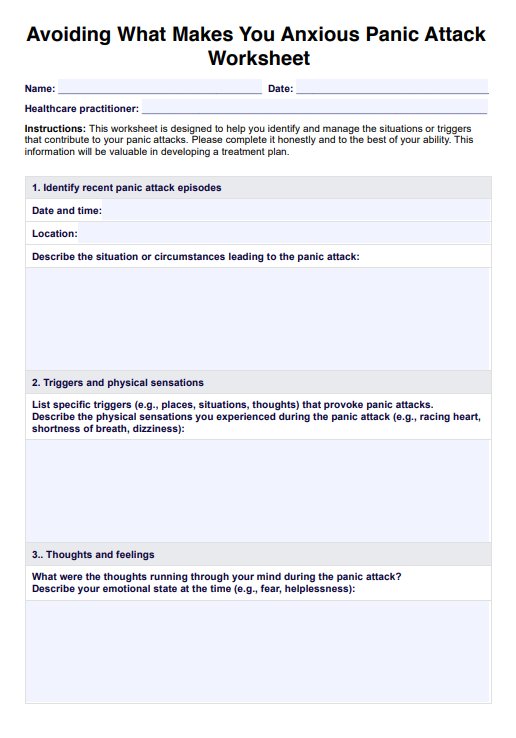This worksheet aims to help individuals and healthcare practitioners gain insights into the causes and triggers of panic attacks. It aids in developing strategies for managing panic attacks effectively.

Avoiding What Makes You Anxious Panic Attack Worksheet
Master anxiety management with our Avoiding What Makes You Anxious Panic Attack Worksheet for effective healthcare solutions.
Use Template
Avoiding What Makes You Anxious Panic Attack Worksheet Template
Commonly asked questions
While individuals can use this worksheet for self-reflection and self-help, healthcare professionals, such as therapists or psychologists, often administer it as part of a structured assessment and treatment plan.
You can typically access the worksheet through your healthcare practitioner, who may provide it as a printable document or within their preferred therapy software.
EHR and practice management software
Get started for free
*No credit card required
Free
$0/usd
Unlimited clients
Telehealth
1GB of storage
Client portal text
Automated billing and online payments











